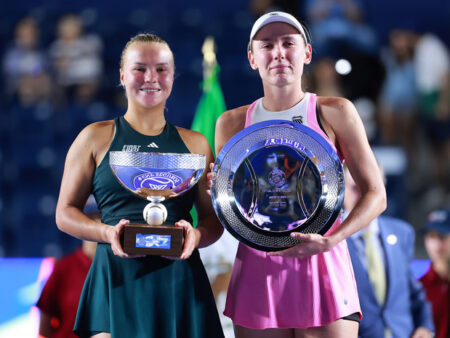The recent NHL off-season unfolded with an uncharacteristic calm, a period of relative dormancy that left many prognosticators scratching their heads. Despite an anticipated surge in the salary cap and numerous teams openly acknowledging roster deficiencies, the expected flurry of blockbuster trades and bold offer sheets largely failed to materialize. It was, by most accounts, a quiet affair, leading one to ponder if this silence was merely a prelude to a more profound strategic realignment.
Indeed, the narrative was that a rising salary cap would serve as a catalyst, loosening purse strings and encouraging ambitious moves. Yet, the market remained surprisingly tight. Why the reticence? Primarily, a scarcity of “true sellers” emerged as a key factor. Many struggling teams, rather than embracing a full-scale rebuild, clung to the hope of a quick turnaround, seeking immediate fixes over long-term asset accumulation. They were, in essence, reluctant landlords, unwilling to part with valuable property unless the offer was simply too good to refuse – and those offers, apparently, were few and far between.
The Shifting Sands of Strategy: From Hope to Harsh Reality
This holding pattern, however, is a precarious one. As the new season commences, the initial weeks will undoubtedly serve as a crucible. Teams with aging rosters, whose pre-season optimism quickly gives way to a grim reality on the ice, may find their hands forced. The illusion of being “one piece away” can only persist for so long before the cold hard facts of the standings dictate a different path.
For these organizations, a strategic pivot from contending – or at least attempting to – to actively selling becomes not just an option, but a necessity. The appeal of simply getting by diminishes rapidly when faced with consistent losses, especially when contrasted with the potential rewards of embracing a more fundamental restructuring.
The Allure of Tomorrow: The 2026 Draft`s Generational Promise
Compounding this imminent strategic shift is the whispers surrounding the 2026 NHL Draft class. Hockey insiders are increasingly describing it as potentially “deeper” than its 2025 predecessor, with the tantalizing prospect of a generational talent like Gavin McKenna at its apex. For teams staring down the barrel of another disappointing season, the chance to acquire high draft picks for such a promising pool of future stars presents an irresistible opportunity. It`s the ultimate long-term investment, a painful but calculated sacrifice in the present for a potentially glorious future.
Identifying the Prime Candidates for a “Seller” Mentality
So, which teams might find themselves donning the seller`s cap as the season progresses? The profile is relatively clear:
- Aging Rosters: Teams whose core players are well into their thirties, with diminishing returns and contracts that are difficult to justify for a non-contender.
- Consistent Playoff Misses: Organizations that have repeatedly failed to make a meaningful postseason run in recent years. The definition of insanity, after all, is doing the same thing repeatedly and expecting different results.
- Valuable, Movable Assets: Players, often veterans with manageable contracts or expiring deals, who still possess significant value to a legitimate contender. These are the gold standard for acquiring future assets.
- Need for Young Talent: A prospect pipeline that has run dry, demanding an influx of high-end draft picks and developing players.
Consider a hypothetical team, one that finished deep in the standings last year, exhibiting a concerning goal differential and an overall lack of competitive spark. Despite a strong finish to the previous season, the current campaign proves to be an undeniable struggle. This team possesses several top-six forwards, perhaps a skilled defenseman, all with expiring or easily absorbable contracts. Some might even have no-move clauses, but the prospect of a few losing seasons might just make them amenable to a change of scenery – especially to a legitimate contender.
The Art of the Deal: Leveraging Assets in a Rising Cap Era
The rising salary cap provides a crucial advantage for sellers. Contracts that might have been burdensome in a flat-cap world, such as a $5.5 million or $4.5 million AAV for a veteran forward, suddenly become much more palatable for contending teams with newfound financial flexibility. Furthermore, teams with available salary retention slots can strategically use them to sweeten a deal, making a player even more attractive to a buyer while maximizing the return in draft picks and prospects.
This isn`t merely about shedding salary; it`s about recalibrating the roster for sustained success. Trading a respected veteran for a first-round pick and a promising prospect isn`t an admission of defeat; it`s a declaration of intent for a brighter tomorrow. It`s a pragmatic, if often unpopular, decision to prioritize long-term organizational health over short-term, often fleeting, mediocrity.
Conclusion: Patience in a Hyper-Competitive Landscape
Ultimately, the quiet off-season of the NHL may prove to be the calm before a strategic storm. As the realities of the new season set in, a new wave of “sellers” is likely to emerge, driven by on-ice performance and the undeniable appeal of the 2026 draft. For fans, it`s a call for patience – a quality often in short supply in professional sports. But for general managers, it`s an opportunity to make tough, calculated decisions that can redefine the trajectory of their franchises for years to come. In a league where sustained success is the ultimate prize, sometimes the smartest move is to take a step back before leaping forward, even if it means trading a few familiar faces for the promise of a generational talent.










